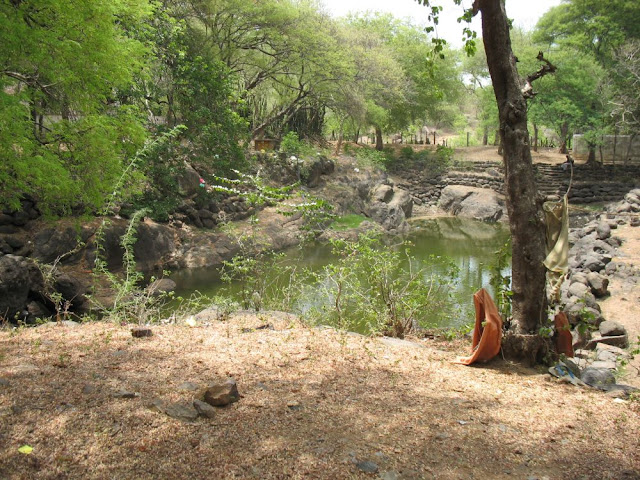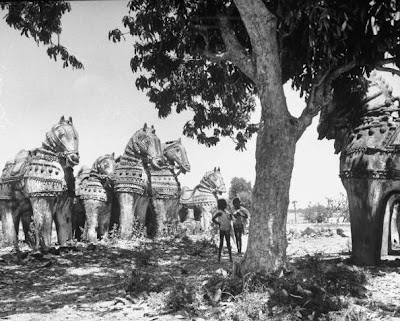Further to an earlier posting on Arunachala Grace, about Land for Industrialisation concerning a 2,300-acre land parcel being readied for acquisition by a government-owned entity -- i.e. State Industries Promotion Corp.,(Sipcot) -- here follows a Press Release of the findings of an independent professional panel investigating SEZs (Special Economic Zones) in Tamil Nadu.
Press Release
5th February 2009, Chennai, Tamil Nadu:
Shocked by findings of large-scale violation of due process, lack of transparency and widespread instances of forced acquisition of farmlands and homesteads, a panel of ex-IAS officers, professors and social activists after hearing the grievances of affected people from seven districts of Tamil Nadu have recommended that the state government should immediately stop land acquisitions for SEZs and annul all notified and approved SEZs in the state. The panel prepared its report after hearing villagers from Oragadam-Sriperumbudur (Kancheepuram), Cheyyar (Tiruvannamalai), Ranipet (Vellore), Panapakkam (Vellore), Nanguneri (Tirunelvelli), Ennore (Tiruvallur) and Hosur (Krishnagiri) at a public hearing held on 3rd December 2008 by the Sirapu Porulaathara Mandalam Ethirpu Iyyakam (Movement against SEZs). The movement is a joint action committee of people affected by SEZ projects in Tamil Nadu.
“It is shocking to see how the state government is taking away the assigned lands, particularly bhoodan land in Oragadam for setting up of these SEZs” said Mr Louis Menezes, a retired IAS official who served as secretary, Government of India. “These lands were assigned to the most marginalised, mostly landless dalits,” he added.
The public hearing exposed as a lie the Government’s claim of “no dissent” amongst people whose lands are being acquired, and that no fertile agricultural lands are being acquired for SEZs. Villagers testified to acquiring of fertile nunjai (irrigated) agricultural land in almost all the areas, of village commons like grazing land and even eris (water bodies) and burial/cremation grounds for SEZs and other industrial purposes by Government-owned SIPCOT and TIDCO. “This is contrary to the stated industrial policy 2007 of the Tamil Nadu government where the Government has said it will not acquire fertile agricultural land,” said Prof Shanmugam Velayutham, Professor, Social Work Department, Loyola College.
“Women spoke about the hardships faced due to usurpation of village commons. They have no access to firewood, water sources, no privacy for sanitation, said Dr Neellavali from Initiatives:Women In Development.
With 122 notified and proposed Special Economic Zones (SEZs), Tamil Nadu boasts of the maximum number of SEZs in the country after Andhra Pradesh and Maharashtra. Even before the central SEZ Act was passed in 2005, Tamil Nadu had formulated its own policy on SEZs in 2003.
“The state government claims of generation of jobs, but it does not mention anything about loss of livelihood. Has SEZs in the state provided jobs to the farmers and landless people who have lost their livelihood?” asked Dr Gabriele Dietrich, Professor, Centre for Social Analysis, Theological Seminary, Madurai. “Tamil Nadu has highest number of landless people in rural areas. Such mindless acquisition of land is pushing people to the brink of destitution,” Dr Dietrich added. Dietrich is also national convenor of National Alliance of People’s Movements.
The public hearing panel consisted of:
Prof. Shanmugam Velayutham, Professor, Social Work Department, Loyola College, Chennai.
Mr Louis Menezes, IAS (retd.), Former Secretary, Government of India.
Mr M.G. Devasahayam, IAS (retd.), Managing Trustee, Citizens’ Alliance for Sustainable Living (SUSTAIN), Chennai.
Dr Neelavalli, Activist, Director, Initiatives: Women In Development, Chennai.
Dr Gabriele Dietrich, Professor of Social Analysis, Centre for Social Analysis, Tamil Nadu Theological Seminary, Madurai and National Convener of National Alliance of People’s Movements.













































